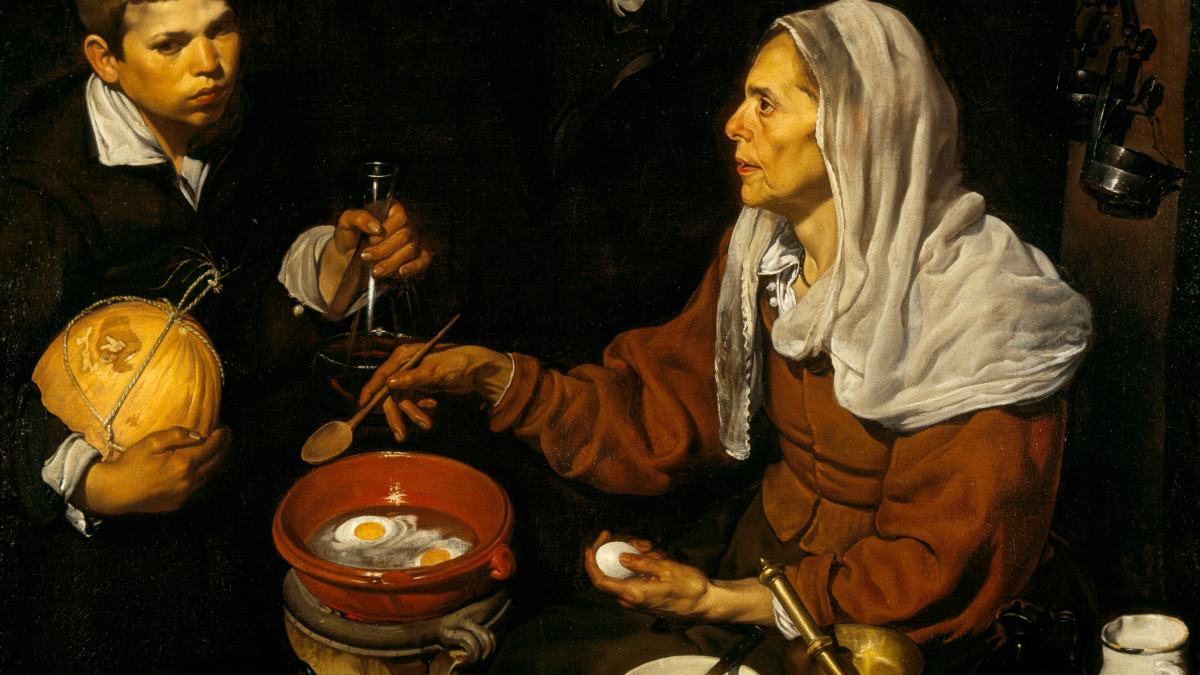Click here to read the Spanish version.
A few months ago we discussed the artistic facet of gastronomy itself, and debated whether it should be considered one of the fine arts. But the truth is that many artists have found in gastronomy a very strong inspiration and, even for some, it would be a real muse in their works of art. From the most traditional culinary scenes to basic foods considered fetish by many painters. We review five traditional culinary references in the works of art of famous Spanish painters.
Velázquez and his costumbrist traditions
Velázquez’s most famous work was Las Meninas, but the Sevillian painter also left a great legacy of the most everyday scenes of 17th century Seville, many of them related to cooking. In fact, in one of his most popular paintings, Old Woman frying eggs, the painter perfectly portrays a Spanish culinary tradition that still survives to this day: a plate of fried eggs. Without going into technical details, the painting makes clear Velázquez’s fascination for showing such a domestic moment as those that take place around the kitchen. And in this particular case, it makes clear the reality of the average citizen, far from royal riches and culinary ostentation.
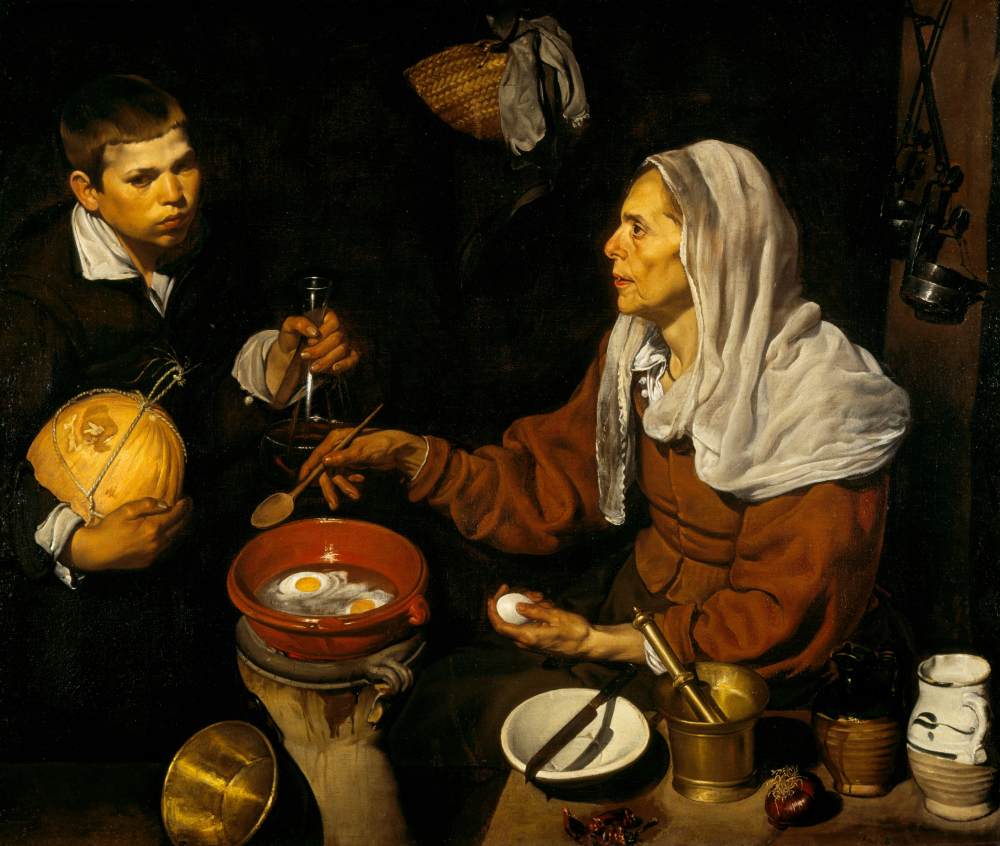
Another everyday scene of Seville at the time is also reflected in the painting El almuerzo, also known as Tres hombres a la mesa (Three men at the table). In this painting by Velázquez, three people -representing the three ages of man- appear around a table enjoying such a popular tradition as a good morning meal. The painter chose to reflect it with a plate of mussels along with several pieces of bread, a glass of wine, two pomegranates and a porrón carried by the youngest boy. He also decided to show the two younger characters with a happier countenance, while the older one remains more serious and focused on enjoying the ritual of lunch.
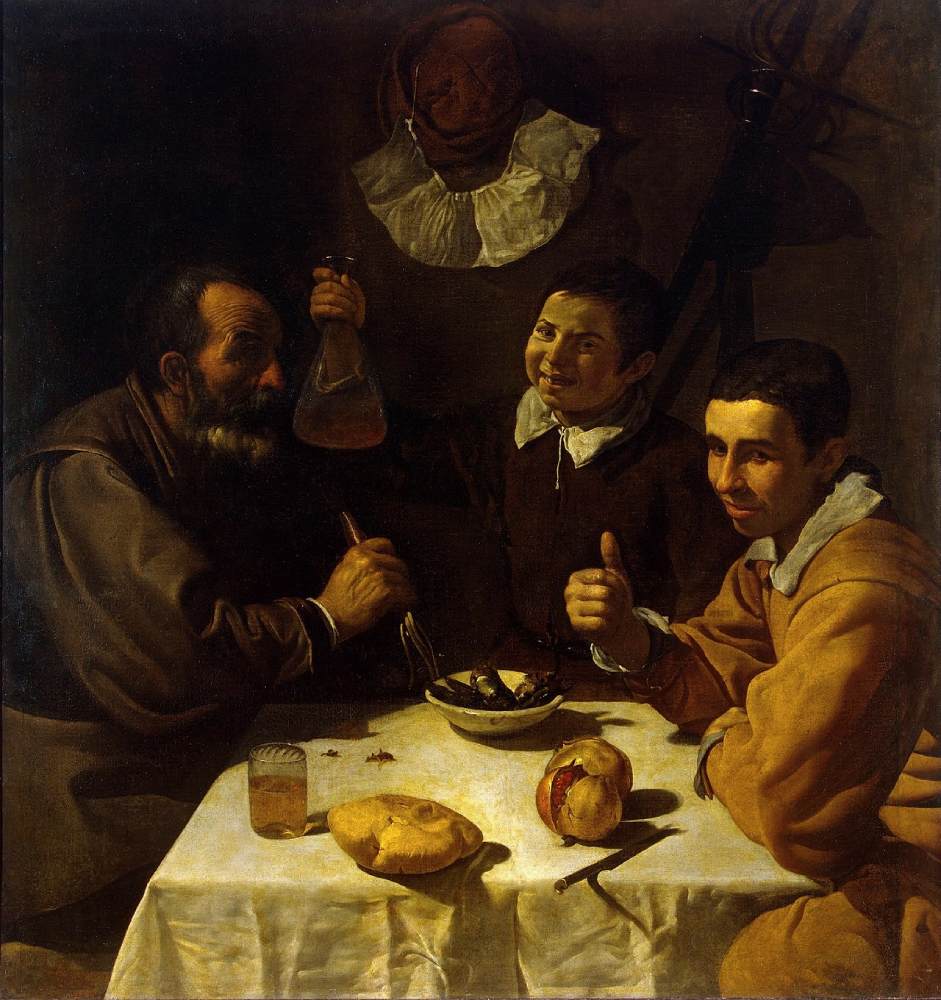
On this theme the Sevillian painter also made another version, entitled Peasant’s Lunch or Girl and two men at the table, in which he reflected the same moment of lunch, but this time two men appear seated at the table having lunch, along with a maiden who is serving a jug of red wine. Instead of mussels there is fried fish with a slice of lemon; while for fruit he decided to add an orange.
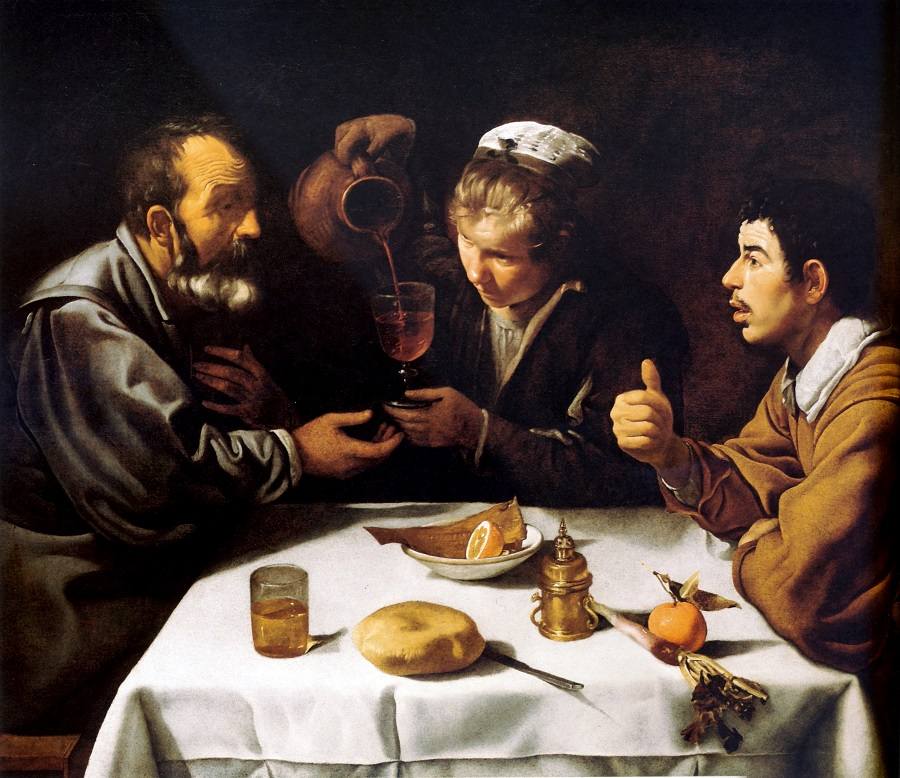
Luis Egidio Meléndez and still lifes
Although he was born in Italy, Luis Egidio Meléndez was from a Spanish family and developed almost all his work in our country. This painter is one of the most outstanding in the field of still lifes, especially with culinary references. For example, in the painting Still Life with Salmon, Lemon and Containers, which is exhibited in the Prado Museum, Meléndez’s art of reflecting this type of elements in a sober and very realistic way is perfectly shown. In the work appears a piece of fresh salmon, along with a lemon and several kitchen pots: a copper vessel, a copper pot and a pot of Alcorcón (as detailed on the website of the Prado Museum). This is just one example of the gastronomic still lifes that the painter of Neapolitan origin painted during his work.
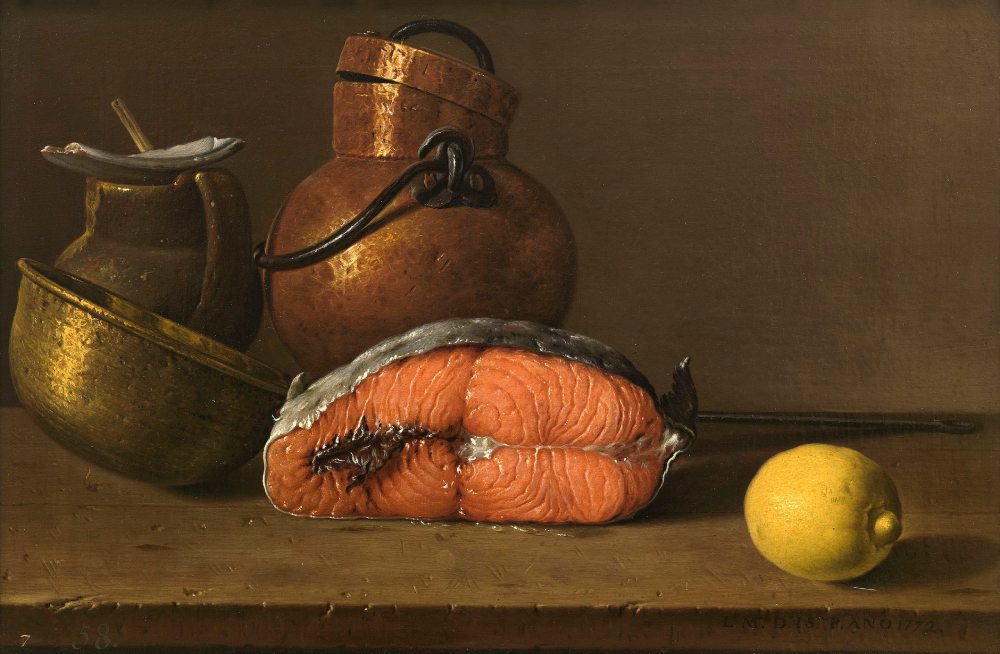
Picasso and his vision of the kitchen
Although gastronomy is not the main protagonist in the work of Pablo Picasso, it is a recurring theme throughout his work, although it appears in a secondary way. In fact, outside of his paintings, restaurants were a very important place for Picasso, as they were a meeting point with other artists of the time, such as the emblematic Quatre Gats tavern in Barcelona. Many of these gastronomic representations were carried out through still lifes, during all his varied stages. An example is this Still Life (the dessert), which could have a reference to the paintings of Cézanne. Unlike his cubist period, here the elements are represented with vivid colors and energetic brushstrokes, especially in the vase, the pitcher and the fruit bowls. The beer mug stands out, which the artist wanted to paint with the typical ornamentation of the craftsmanship of the French region of Quimper.
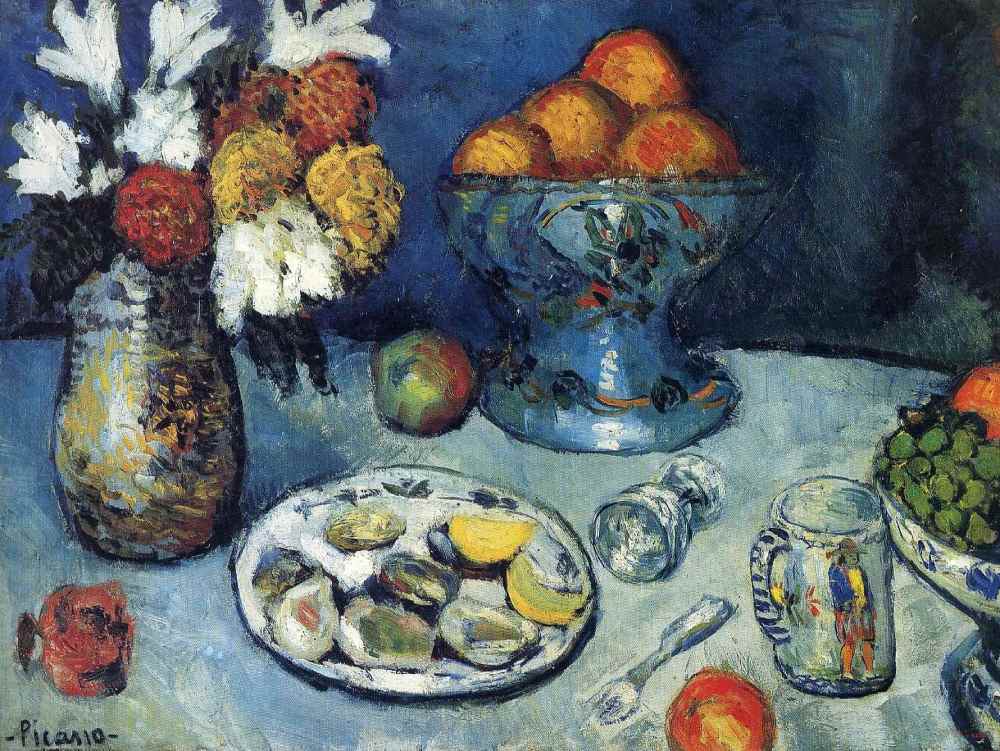
Goya and his black paintings
Francisco de Goya also depicted some costumbrist culinary scenes during his pictorial work. In fact, in his well-known Pinturas negras, a series of 14 oil paintings that Goya hung on the walls of the Quinta del Sordo, the Aragonese painter also included gastronomic references, as for example in the painting of Two Old Men Eating Soup. Here, two elderly people appear -it is not possible to distinguish whether they are women or men-, eating a bowl of soup, with a lost look and a somewhat disconcerting countenance. The scene is a reflection of old age, of those last sips of life, and the soup perfectly reflects that moment, as it is a basic and classic spoon recipe from the grandmothers’ recipe book.
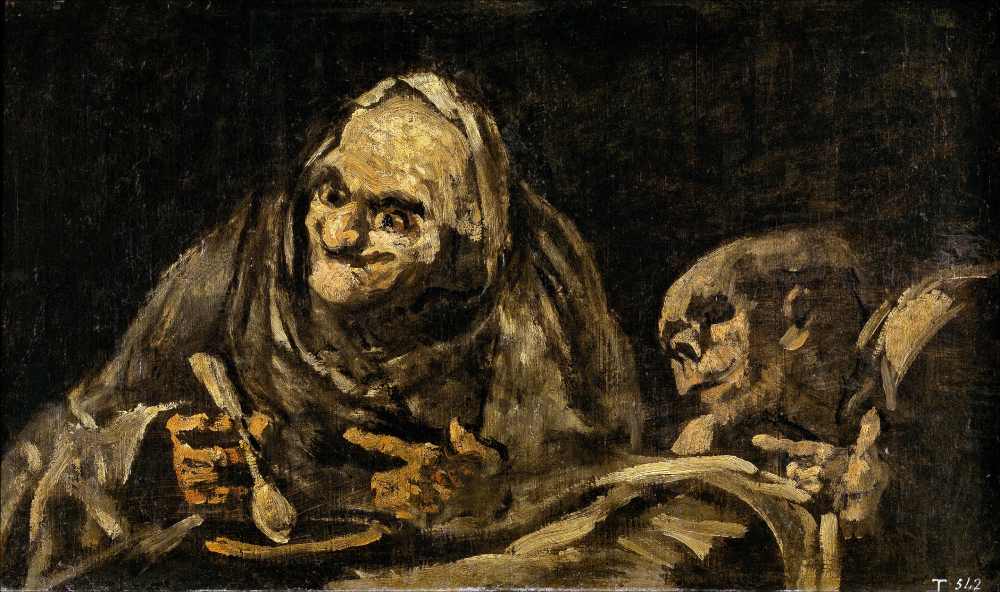
Dalí and bread
This review could not end without a reference to one of the most widespread customs in the national gastronomy: bread. In his work The Bread Basket (1945), Dalí wanted to reflect such a basic ingredient as a loaf of bread inside a wicker basket. The artist even commented that he had been painting this work “for two consecutive months, four hours a day” and that bread “has always been one of the oldest fetishistic and obsessive themes in my work, the one to which I have remained most faithful”. In fact, almost 20 years earlier, the painter from Figueres had already painted on the same subject.
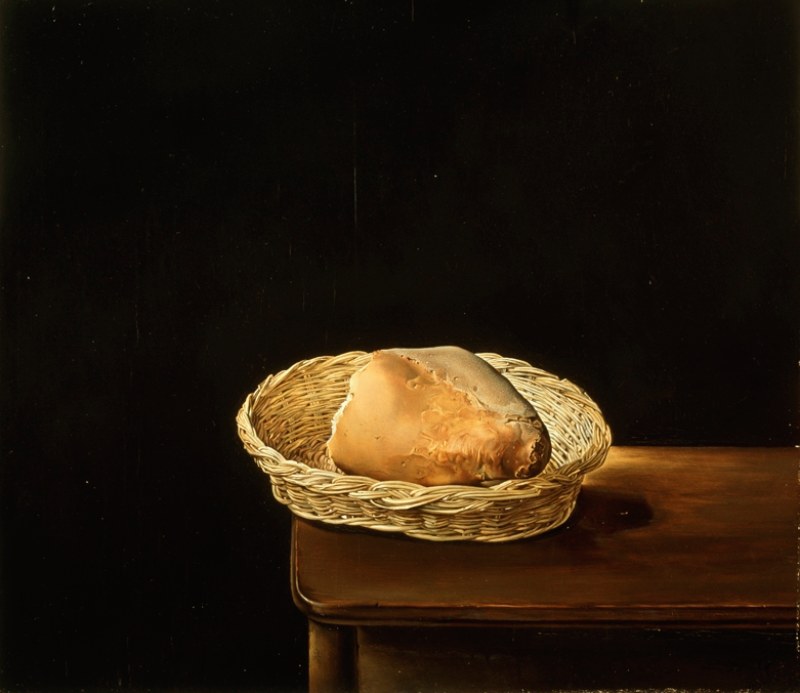
But his love for gastronomy went far beyond the inclusion in his paintings. Dalí, and above all his wife Gala, had a real passion for cooking and would give themselves real culinary feasts, which the artist reflected in Les dîners de Gala, a cookbook he published in 1973, which includes illustrations by the artist and recipes accompanied by Dalí’s extravagant reflections that were given during the meetings around the table, such as: “The jaw is our best tool for grasping philosophical knowledge”.

